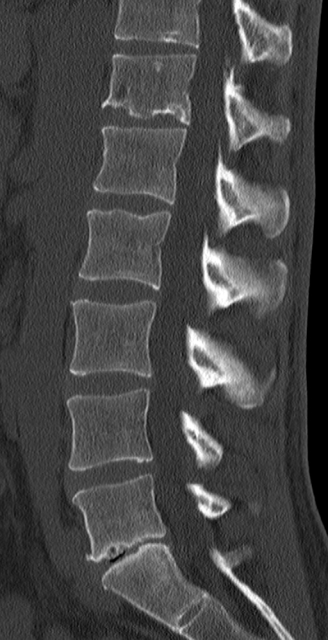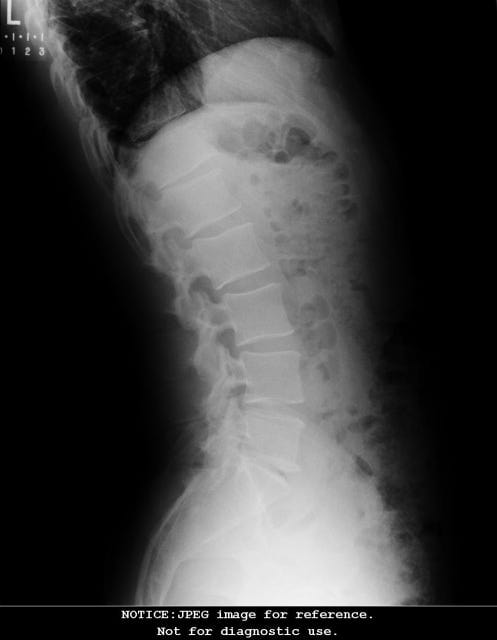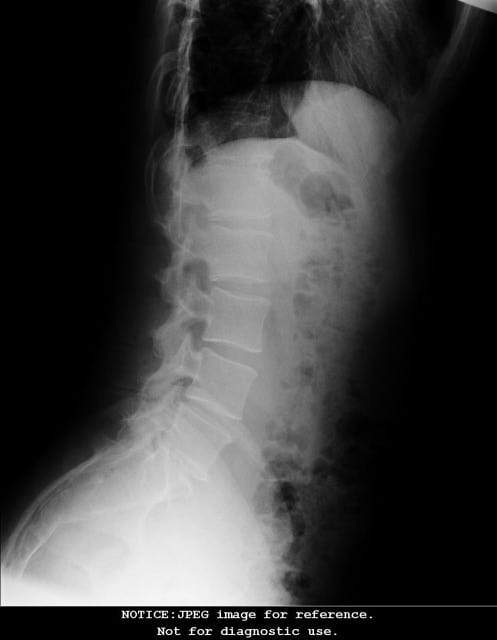Question CT Scan L5 S1
CT Scan L5 S1
QUESTION: I am a low back (L5-S1) patient that has had everything done over the past five years without any success (local 3-4 level pain when walking that also includes a good deal instability while walking - with a pronounced 20 degree backward lean). I am now very close to deciding on Anterior or Posterior Fusion Surgery to provide more stability to L5-S1 where I have a 2-4MM retrolisthesis (can be seen on any of the MRIs). I would like to know if you have ever seen anyone with my strange symptom. Namely, I have only local L4-S1 pain when standing or walking, but I walk with a pronounced lean backward (at least 20 degrees) and my body forces me into this position after 1-2 steps. Basically I can no longer walk without a jerky motion whereby by back parasinals pull me backward.
Before I go under the knife with a doctor I would like your opinion on what is really causing the backward lean from a kinesiological perspective. Can this be caused through a naturally fusing L5/S1 vertebrate? I have gone to physical therapists that have tested my psoas muscle (bilaterally) and it appears to be weak, although I have strengthened it without an reduction of the symptoms. One interesting symptom is that I can walk without pain by leaning forward, but my erector spinae eventually win out (with one minute) and I then walk with a pronounced backward lean (with pain at the L4-S1 area).
Here is my back history(not that interesting):
-Mid - August 2007 - Landed awkwardly when jumping from a rock formation and had acute pain for 2 days
-Late - August 2007 - Saw Chiro- pain subsided to a 2-3 level from 8-10- Local to L5-S1 and it doesn't travel down the legs
-September 2007 - Had 10 sessions of rehab - no real results - still 2-3 level pain
-September 2007 - MRI - Results indicate L5/S1 compression and dry disks (not uncommon for a 43 year old man)
-October 2007 - Had a steroidal med pack - still 2-3 level
-January -March 2008 - 28 DRX treatments at a chiropractor - No real improvement - still 2-3 level
-July- January 2008 - Saw Chiropractor - Active manipulation - No real improvement - 2-3 level
-December 2008 - Had second MRI - no differences noted from the previous MRI
-February 2009- Saw Ortho again and he recommended pain management
-March 2009 - Visited a pain management specialist and he suggested facet vs. epidural injections
-March ?June 2009 - Saw Chiro - cold laser therapy, active manipulation - No Real improvement - 2-3 level when walking
-January 2010 - Facet Joint Injections to L5-S1 (4 joints) with no reduction in pain and, in fact, an increase in anterior pelvic tilt and pain/instability when walking - pronounced backward lean when walking!!!!
-December 2010 - Facet Joint Injections to L5-S1 (4 joints) with no reduction in pain and, in fact, an increase in anterior pelvic tilt and pain/instability when walking - more pronounced backward lean while walking!!!!
-Current - Given up believing that chiropractic techniques will resolve pain for me and have seen many Spine Surgeons about my case - most indicate there may be a natural fusion in 3-4 years, however, I can't really live with my current walking condition(unstable with pronounce backward lean)!
Enclosed is my latest MRI report (and images) and my latest CT Scan report (and images) that outline the slight retrolisthesis and slight L5 herniation abutting the thecal sac at L5-S1. Basically, my L5-S1 disk no longer exists and osteophytes have started to grow(see ct spinal cross section.jpg). With my instability while walking creating a severe backward lean (I can walk backward fine) I am running out of nonsurgical options.
I would appreciate a response if you believe something can be done from a kinesiological point of view. I can no longer walk forward without a backward lean of 20-30% (however I can walk backward without issue). I wanted your opinion before setting up an appointment with someone that can help me.
ANSWER: Dan,
You may simply have a shot spinal joint, with a cruddy degenerative disc and a lot of pressure on the tissues. You also may have instbility where one lumbar vertebra slides around on the other. This often is the problem, and surgical fusion needs to be considered. I cannot see the MRI reports. The only image is a lateral view from the CT that does not show any notable retrolisthesis (e.g. the bones line up well). It would be more interesting to see simple x-ray of your lumbar spine with you standing and 1) bent backwards into extension, and 2) bent forwards into flexion. This is called flexion/extension stress views and it would show if you have any significant segment instability, and it would also better indicate that you are a surgical candidate. I've seen cases like yours and the surgery is helpful.
'Hope this was helpful.
Dr. G
---------- FOLLOW-UP ----------
 Extension XRay
Extension XRay  Flexion XRay
Flexion XRay
QUESTION: Dr. G,
I don't believe is it the latter (I have enclosed the Flexion/Extension) Xrays) as there is no real shift at L5-S1. The part every orthopedic surgeon is perplexed by is that my body "forces" me backward during walking and that is the direction in which the pain increases. I can force myself to walk leaning forward for 10-20 steps without pain, but the spinal erectae eventually pull be back to the rear leaning posture (and more pain).
In any case, I appreciate your input and would like to know if you ever hear of another case like mine. I am very concerned about getting a fusion surgery as this may create more pain and not solve my postural issue.
Regards,
Dan
AnswerHi Dan,
The flexion/extension x-rays did not look like you were in flexion or extension. Ideally, you would wear a back pack and extend all the way back, and then you would flex all the way down as if to touch your toes. I cannot see your hips on the flexion view, so I don't know if this is the flexion view simply turned upright. Regardless, there is no flexion to your spine in this x-ray. You still have a normal lumbar curve (extended, in a "lordosis") in the flexion view. Look at it this way: your body moves into a posture to avoid pain or other problem. Lumbar flexion causes a lot of pressure on the intervertebral disc, especially at about 30 degrees of flexion. You can duplicate this with a standing slump posture. If pain builds in this posture, then you clearly have a disc problem. Also, understanding that the muscles of the back are slaves, responding to the command of your spinal cord that is attached to and reading the tissues along your spine, your posture may simply be your body's way of pulling away from the offending posture, vis. flexion of your spine. I'd bet that if the x-rays were done correctly, it would show an instability. Maybe it's worth having that done again.
'Hope this was helpful.
Dr. G'




